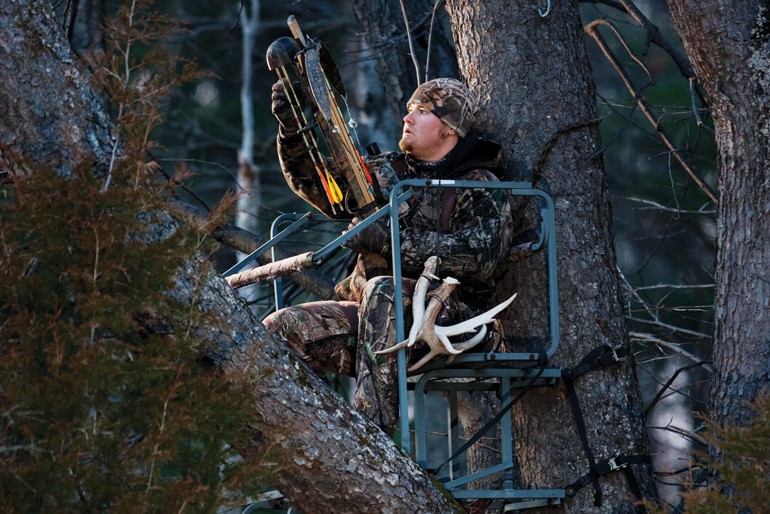Want the best seat in the fall deer woods? Reserve now
Advertisement
Every year in early April, my bowhunting crew and I head to my cabin in the big woods of central Ontario on a special mission. Our objective? Find the ultimate treestand site for the following fall’s whitetail hunt. Many factors come into play when assessing the potential of a stand site, and we find it’s best to check things out in the spring because the woods are wide open.
The main factor is the presence of deer sign—or more specifically, buck sign—left from the previous fall. It’s there to find, just as it was before the first snows of winter arrived: scrapes, rubs, travel routes, and feeding and bedding areas, all laid out like a road map before spring green-up. To pinpoint the ultimate stand site for your next bowhunt, find the sign and follow these guidelines.
Advertisement
Plan your mission
As with any scouting mission, you’ll need a GPS unit, compass and topographic map. A good map reveals terrain features that can lead you to potential stand sites, so study it closely and note locations to investigate. If you can also get an aerial photo of the area you’re hunting, even better.
When you’re in the field and come across some deer sign, create a waypoint on your GPS unit. You can also use your GPS to map routes to and from your stands, creating a great overview of your hunting area. If you don’t have a GPS, maps or aerial photos will suffice. Mark everything on the map as you would on a GPS.
As for the compass, it’s an absolute must for figuring out and recording wind directions. Of course, it’s always a good idea to carry a compass into the woods in case your GPS runs out of juice.
Advertisement
Proceed with caution
Being able to access a stand site without disturbing or spooking deer is one of the toughest challenges to overcome. If you walk through areas that deer regularly use, they’ll pick up on your presence in a hurry, regardless of how careful you are with scent control. Many times I’ve observed how deer react to fresh human tracks in the snow, and it’s not good. For a stand site to be classified as “ultimate,” you have to be able to get in and out without disturbing the deer.
Watch the wind
Likewise, a stand location is only ideal if there’s no way for deer to get downwind of you. That means you need a natural barrier on the downwind side of the stand. In the big woods environment I hunt, this is usually water, such as a lake or beaver pond. It can also be terrain that’s too steep for deer to climb up or down, most often a ridge.
Both of these barriers can also allow you to access the stand without disturbing the deer. In the case of water, you can reach your stand by boat or by walking the shoreline. As for steep terrain, just be prepared for a challenging climb. But use common sense—it doesn’t have to be a cliff.
Create a funnel
It doesn’t matter how much deer sign you find, how great the access is or how difficult it is for the deer to get downwind of you—if there isn’t a terrain feature that forces deer into the stand’s bow range, all is for naught. Believe me, nothing is more frustrating in bowhunting than constantly seeing animals that are just out of range. Several of our best stands are on beaver dams between ponds or on narrow ridge tops. In either scenario, deer are forced to walk within 25 yards of the stands—the ultimate set-up.

